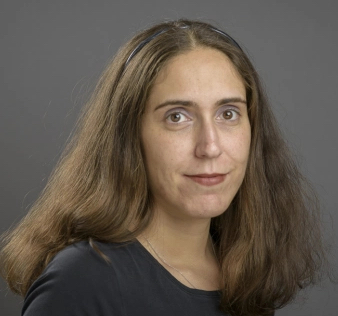Recent years have seen an explosion of interest in computational protein design, to either design new enzymes completely de novo or to redesign existing enzymes towards novel catalytic properties. The Kemp elimination reaction has been a particularly popular model system for both experimental and computational design studies, despite inherent challenges in optimizing catalysts for this reaction (the transition state is very similar to the ground state, with minimum charge change, making it hard to use electrostatic stabilization to achieve catalysis). We recently used the conformational dynamics of resurrected Precambrian β-lactamases, identified through ancestral sequence reconstruction, to insert a de novo active site capable of Kemp elimination1 with a catalytic efficiency not far from the best de novo Kemp eliminases designed to date, after several rounds of directed evolution.2,3 We have now performed ultra-low-throughput experimental sequence screening based on computational guidance on these de novo enzymes,4 and have enhanced both kcat and kcat/KM to generate one of the most proficient catalysts of Kemp elimination to date, using a very simple computational design protocol.
Valeria Risso,1 Adrian Romero-Rivera,2 Luis I. Gutierrez-Rus,1 Mariano Ortega-Munoz,3 Francisco Santoyo Gonzalez,3 Jose A. Gavira,4 Jose Manuel Sanchez-Ruiz,1 and Shina Caroline Lynn Kamerlin5
1 Quimica Fisica, University of Granada, Granada, Spain. 2 Chemistry-BMC, Uppsala University, Uppsala, Sweden. 3 Quimica Orginica, University of Granada. 4 Laboratorio de Estudios Cristalograficos, Instituto Andaluz de Ciencias de la Tierra, CSIC, Granada, Spain. 5 Department of Chemistry-BMC, University of Uppsala, Uppsala, Sweden.
References:
1. Risso et al. (2017) De novo active sites for resurrected Precambrian enzymes. Nature Commun. 8:16113.
2. Blomberg et al. (2013) Precision is essential for efficient catalysis in an evolved Kemp eliminase. Nature 503:418-421.
3. Khersonky et al. (2012) Bridging the gaps in design methodologies by evolutionary optimization of the stability and proficiency of designed Kemp eliminase KE59. Proc. Natl. Acad. Sci. USA 109:10358-10363.
4. Risso et al. (2020) Enhancing a de novo enzyme activity by computationally-focused ultra-low throughput sequence screening. Chem. Sci. 11:6134-6148.

Lynn Kamerlin received her Master of Natural Sciences from the University of Birmingham (UK), in 2002, where she remained to complete a PhD in Theoretical Organic Chemistry under the supervision of Dr. John Wilkie (awarded 2005). Subsequently, she was a postdoctoral researcher in the labs of Stefan Boresch at the University of Vienna (2005-2007), Arieh Warshel at the University of Southern California (2007-2009, Research Associate at the University of Southern California in 2010) and Researcher with Fahmi Himo (2010). She is currently a Full Professor of Structural Biology at Uppsala University, a Fellow of the Royal Society of Chemistry, and a Wallenberg Scholar She was also the recipient of an ERC Starting Independent Researcher Grant (2012-2017) and the Chair of the Young Academy of Europe (YAE) in 2014-2015.
View this talk below:




